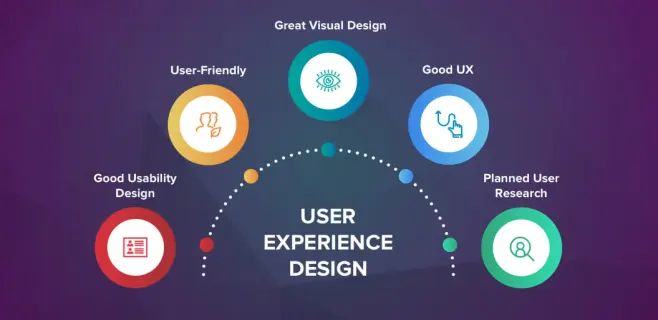Tag: Qualitative
-

Collaborative Streaming Infrastructures in Europe
Europe’s streaming market remains fragmented due to linguistic, cultural, and regulatory divisions, preventing the rise of a unified platform like Netflix. This research explores how collaborative infrastructures—such as the Bedrock platform—enable national broadcasters to share technology while maintaining editorial independence. Through co-opetition, these ventures aim to achieve scale, reduce costs, and enhance user experience, offering…
-

Optimizing User Experience in the Era of Streaming
Research Proposal: Optimizing User Experience in the Era of Streaming Overload—Exploring Interface Design, AI Integration, and Cross-Platform Solutions for Content Discoverability
-

Loss Aversion in Marketing:
Loss aversion, a cornerstone of behavioral economics, profoundly impacts consumer decision-making in marketing. It describes the tendency for individuals to feel the pain of a loss more strongly than the pleasure of an equivalent gain (Peng, 2025), (Frank, NaN), (Mrkva, 2019). This psychological principle, far from being a niche concept, permeates various aspects of consumer…
-

Research Ideas: Loss Aversion and Marketing
Ten research suggestions building upon the existing literature on loss aversion’s impact on marketing and commercial strategies. The preceding analysis highlighted the significant influence of loss aversion on consumer behavior, shaping decisions across various marketing aspects, from advertising and pricing to product design and customer loyalty. These suggestions aim to address gaps in current understanding…
-

Loss Aversion in Marketing and Commercials: A Multifaceted Analysis
Loss aversion, the psychological principle that the pain of a loss is felt more strongly than the pleasure of an equivalent gain (Guttman, 2021), (Schulreich, 2020), profoundly impacts consumer decision-making. This disproportionate weighting of losses over gains significantly shapes how consumers perceive value, make choices, and respond to marketing messages
-

YouTube Strategy for Traditional Media: Channel 4’s Approach
Channel 4’s approach to YouTube demonstrates that traditional broadcasters can successfully adapt to the changing media landscape. By embracing data-driven decision-making, tailoring content to platform-specific audiences, and maintaining a flexible strategy, broadcasters can turn potential threats into opportunities for growth and audience engagement.As the lines between traditional and digital media continue to blur, the experiences…
-
The Effect of Music Playlists on Streaming Services: Listener Retention and New Music Discovery
Introduction The rise of music streaming services has fundamentally altered how individuals consume and discover music. This transformation is largely driven by the ubiquitous nature of curated playlists, both algorithmically generated and human-curated. This analysis explores the multifaceted impact of music playlists on listener retention and the discovery of new music within streaming services, drawing…
-
The Use of Scent to Enhance Immersion in Virtual Reality, Streaming, and Broadcasting
Introduction The integration of olfactory cues, or scents, into virtual reality (VR), streaming, and broadcasting environments represents a burgeoning field of research aimed at enhancing user immersion and engagement. While visual and auditory stimuli have long been the dominant forces in these media, the potential of olfaction to create more realistic and emotionally resonant experiences…
-
A Comprehensive Analysis of Changes in Video and Broadcast Distribution and Production
Research Ideas at the end of the literature review SVOD, VOD, FAST, and Other Video Distribution Systems: A Comprehensive Analysis of Changes in Video and Broadcast Distribution and Production Introduction The landscape of video and broadcast distribution has undergone a dramatic transformation in recent years, driven by technological advancements and evolving consumer preferences. This shift…
-
Top 2000 over the years
A Literature Review on Radio and Media: Exploring Cultural Practices, Listenership, and the Evolution of Sound Technologies This literature review examines the multifaceted relationship between radio and media, drawing upon a range of scholarly works to explore the impact of sound technologies on cultural practices, audience engagement, and the evolving landscape of radio broadcasting. The…
-
The Effectiveness of Podcasts and Explainer Videos Supporting Textbooks in Flipped Classrooms
Abstract This literature review examines the effectiveness of integrating podcasts and explainer videos as supplementary resources to textbooks within flipped classrooms. The study analyzes research on multimedia tools that mirror textbook structure, aiming to optimize learning outcomes. It explores successful implementations across diverse subjects, highlighting improved student performance and engagement. The review identifies best practices…
-
Successful Strategies for Creating Engaging Contemporary Music Radio Shows
Introduction: The Evolving Landscape of Contemporary Music Radio and the Crucial Role of Audience Engagement This literature review investigates successful strategies for creating and maintaining engaging contemporary music radio shows across diverse genres—pop, hip-hop, rock, and singer-songwriter—with a focus on long-term audience retention. The proliferation of digital media and the fragmentation of the listening audience…
-
Writing a Research Report
A research report is a structured document that presents the findings of a study or investigation. It typically consists of several key parts, each serving a specific purpose in communicating the research process and results. The report begins with a title page, which includes the title of the research, author’s name, and institutional affiliation. Following…
-
Choosing Method(Chapter B4)
The choice of research method in social research is a critical decision that shapes the entire research process. Matthews and Ross (2010) emphasize the importance of aligning research methods with research questions and objectives. This alignment ensures that the chosen methods effectively address the research problem and yield meaningful results. Quantitative and qualitative research methods…
-
Data Analysis (Section D)
Ever wondered how researchers make sense of all the information they collect? Section D of Matthews and Ross’ book is your treasure map to the hidden gems in data analysis. Let’s embark on this adventure together! Why Analyze Data? Imagine you’re a detective solving a mystery. You’ve gathered all the clues (that’s your data), but…
-
Immersiveness: Creating Memorable Media Experiences
Media has become an indispensable part of our daily lives, and immersiveness is a key factor that determines the success and popularity of any medium. Immersiveness refers to the extent to which a medium captures and holds the attention of its audience, and makes them feel involved in the story or the experience. According to…
-
Audience Transportation in Film
Audience transportation is a concept in film that describes the extent to which viewers are transported into the narrative world of a movie, creating a sense of immersion and emotional involvement. Studies have shown that audience transportation is achieved through a combination of factors, including setting, character development, sound, music, and plot structure. Setting plays…
-
Emotional Involvement in Film
Emotional involvement in film is a complex psychological phenomenon that occurs when a viewer becomes deeply engaged with the characters and events depicted on the screen. This involvement can be driven by a variety of factors, including empathy with the characters, identification with their struggles, and the emotional impact of the film’s themes and messages.…
-
Empathy in Media
Empathy is a crucial component of human communication and interaction, and it plays a vital role in our ability to understand and connect with others. In recent years, there has been growing interest in the role of empathy in media, particularly in the ways that media can foster empathy and increase our understanding of others.…
-
The Power of Ambiguity: Exploring Empathy in Films with Ambiguous Protagonists”
Empathy is the ability to understand and share the feelings of others. In the context of film, empathy plays a crucial role in engaging the audience with the characters and the story. Ambiguous protagonists are characters that are difficult to classify as wholly good or bad, and their actions are open to interpretation. The portrayal…
-
The Uses and Gratification Theory
The uses and gratification theory is a framework that seeks to explain why people use media and what they hope to gain from their media consumption. This theory suggests that individuals actively choose and use media to satisfy specific needs and desires. The theory highlights the role of the audience in interpreting and using media…
-
Concepts and Variables
Concepts and variables are important components of scientific research (Trochim, 2006). Concepts refer to abstract or general ideas that describe or explain phenomena, while variables are measurable attributes or characteristics that can vary across individuals, groups, or situations. Concepts and variables are used to develop research questions, hypotheses, and operational definitions, and to design and…
-
Immersiveness Measuring with Scales
Immersiveness is a key aspect of film that refers to the degree to which viewers feel engaged and absorbed in the cinematic experience (Tamborini, Bowman, Eden, & Grizzard, 2010). Measuring immersiveness in film can be challenging, as it is a subjective experience that can vary across individuals and films (Calleja, 2014). In this discussion, I…
-
Hypodermic Needle Theory
The hypodermic needle theory, also known as the “magic bullet” or “direct effects” model, is a communication theory that suggests that media messages are directly and uniformly injected into the minds of audiences, resulting in a predictable and uniform response (Katz & Lazarsfeld, 1955). According to this theory, audiences are passive and easily influenced by…
-
The Meaning Theory of Media Portrayal
The meaning theory of media portrayal suggests that media messages are not simply neutral or objective descriptions of reality, but are constructed in a way that shapes how audiences interpret and understand the world around them. According to this theory, the meaning of media messages is not fixed or universal, but rather varies depending on…
-
The Two-Step Flow Theory
The Two-Step Flow theory is a communication model that suggests that information flows through opinion leaders, who are influential people with a great deal of knowledge or interest in a particular topic (Lazarsfeld, Berelson, & Gaudet, 1948). These opinion leaders receive information from the media and then pass it on to their followers or peers,…
-
Agenda-setting Theory
Agenda-setting theory is a communication theory that posits that the media can influence the public’s perception of the importance of issues by highlighting some issues while ignoring others. The theory suggests that media coverage does not tell people what to think but instead tells them what to think about (McCombs & Shaw, 1972). The theory…
-
Cultivation Theory
Cultivation theory is a theoretical framework in the field of media studies that explains how long-term exposure to media can shape people’s perceptions of reality. According to this theory, the more an individual is exposed to media content, the more their perceptions of reality become shaped by the media, resulting in the cultivation of shared…
-
Reinforcement Theory
Reinforcement theory is a well-established psychological theory that has been applied in various areas of media studies, such as advertising, social media, and video games (Chen & Wang, 2017; Hsu & Lu, 2017). The theory suggests that behavior can be modified through the use of positive or negative reinforcement, and that behavior is shaped by…
-
Cognitive Dissonance Theory
Cognitive dissonance theory has been a widely studied topic in the field of social psychology and media studies, as it provides a framework for understanding how individuals deal with conflicting beliefs, values, or ideas. While the theory has been useful in explaining many phenomena related to persuasion and attitude change, it has also faced criticism…
-
Information Processing Theory
Information processing theory is a psychological model that explains how individuals perceive, process, and retrieve information from their environment. This theory has significant implications for media students as it can help them understand how people interact with media, the factors that influence their media use, and how media can influence their attitudes and behavior. In…
-
Broadbent’s Filter Model
Broadbent’s filter model is a classic theory in cognitive psychology that posits our attention acts as a filter that selectively allows certain information to pass through to our conscious awareness, while blocking out other information (Broadbent, 1958). The model proposes that we initially process all incoming sensory information in a pre-attentive stage, where the information…
-
Narrative Engagement
Narrative engagement is a crucial concept in media studies that refers to the process by which audiences are drawn into a story and become emotionally invested in the characters and their journey. This engagement can be achieved through a range of narrative techniques, such as compelling storytelling, relatable characters, and immersive world-building. In this discussion,…
-
Aborption, Immersion, Presence
Absorption, immersion, and presence are interrelated concepts that play a crucial role in media studies. Absorption refers to the degree to which an individual becomes engrossed in a media experience, while immersion refers to the sensation of being fully surrounded by the media environment. Presence, on the other hand, refers to the sense of “being…
-
Parasocial Interactions
Parasocial interactions refer to the psychological connections individuals form with media figures, such as celebrities, characters in films or TV shows, and social media influencers. These connections can be characterized by feelings of intimacy, attachment, and identification, despite the absence of any real-world interaction. Parasocial interactions have been studied extensively in media studies and psychology,…
-
The Entertainment Model
The Entertainment Model is a theory that explains how media content is created to entertain and engage audiences, rather than to inform or educate. This model is widely used in media studies and has been the subject of both praise and criticism. In this essay, we will discuss the Entertainment Model, its criticisms, and provide…
-
Extended Transportation Imagery Model (ETIM)
The Extended Transportation Imagery Model (ETIM) is a theoretical framework that was developed to explain how media messages influence individuals’ attitudes, beliefs, and behaviors through the use of vivid imagery and narrative transportation. The model is particularly relevant for media students who are interested in studying the impact of media messages on audiences. In this…
-
Suspension of Disbelief
Suspension of disbelief is a term used to describe the willingness of an audience to accept the unrealistic or fantastical elements of a story in order to fully engage with and enjoy a work of fiction. This concept is particularly relevant to media students, who must be able to understand how an audience interacts with…
-
Escapisme
Escapism, defined as the tendency of individuals to seek out entertainment and distraction from the stresses and challenges of everyday life, can be found in various forms of media content, such as books, films, TV shows, and video games (Kahn, Shen, & Lu, 2013). For example, J.K. Rowling’s Harry Potter series provides readers with a…
-
Mood Management Theory
Mood Management Theory, developed by Zillmann in the 1980s, proposes that people engage in media consumption to regulate their emotions and mood. According to the theory, media consumption is an active and purposeful activity, where people seek to manage their emotions and mood, either by maintaining or enhancing their current mood or altering it (Zillmann,…
-
Structural Affect Theory
Structural affect theory is an approach to understanding how media texts generate affective responses, such as suspense, curiosity, and surprise, in their audiences (Carroll, 1996; Plantinga, 2009; Smith, 2014). This theory emphasizes the role of the narrative structure of a media text, as well as the way that it is presented, in shaping emotional responses…
-
Chatman’s Narrative Theory
Chatman’s narrative theory provides a valuable framework for media students to examine and comprehend how narratives operate across different forms of media. The theory highlights three crucial components that contribute to a coherent narrative: story, plot, and narration. Chatman asserts that these elements work together to create a meaningful and complex narrative (Chatman, 1978). One…
-
Suspense
Suspense is a powerful emotional reaction that media students should be familiar with. It is a feeling of uncertainty, anticipation, and tension that builds up as the audience waits for the outcome of an event. According to Gerrig and Zimbardo (2018), “suspense is a cognitive and emotional experience that arises from the audience’s awareness of…
-
Curiosity
Curiosity is a complex and powerful emotional reaction that filmmakers often aim to elicit in their audiences. Various techniques and effects can create curiosity in film, engaging viewers in the story and keeping them invested in it. This essay discusses some of the effects that can create curiosity in film. One of the most effective…
-
Character Identification Theory
he character identification theory is a psychological theory that proposes that individuals tend to identify with fictional characters in media, such as movies, books, and video games. This theory suggests that people are more likely to identify with characters who share their values, beliefs, and experiences, and that this identification can have a significant impact…
-
Framing
Framing is a complex process that involves selectively emphasizing certain aspects of a story or issue while downplaying or omitting others to shape the audience’s perception and interpretation of the event. The concept of framing has been widely discussed in media studies and communication research, as it plays a critical role in shaping public opinion…
-
Ten Media Theories and their Criticism
Hypodermic Needle Theory suggests that media messages are directly injected into the audience and have an immediate and powerful effect. Some early research supported this theory, such as the famous “War of the Worlds” broadcast in 1938 that caused widespread panic among listeners. However, subsequent research has discredited the theory, showing that media effects are…
-
Indepth Interview
Qualitative research interviews are a method used to gather information about people’s experiences, beliefs, attitudes, and perceptions. There are several different types of qualitative research interviews that you can use, each with its own strengths and weaknesses. Here’s an overview of the most common methods: When conducting a qualitative research interview, it is important to…
-
Conducting effective Focus Groups
A focus group is a qualitative research method that involves a small, diverse group of people who are brought together to discuss a particular topic or product. The purpose of a focus group is to gather opinions, thoughts, and feedback from the participants in an informal, conversational setting. Conducting a successful focus group requires careful…
-
Think Out Loud
Qualitative research involves the exploration of individuals’ experiences, attitudes, beliefs, and perceptions to generate insights that can inform various fields. To get the most out of qualitative research, researchers employ various methods to collect, analyze and interpret data. One such method is the think-out-loud method. This page will explain what the think-out-loud method is and…
-
Observation
Observation is one of the most commonly used research methods in media studies. It involves collecting data by watching and recording the behavior and interactions of people in specific situations. Observations can take many forms, including participant observation, non-participant observation, and structured observation. Participant observation is when the researcher becomes an active member of the…
-
Six analysis methods for Qualitative Research
Qualitative interviews are a powerful tool for gathering rich and detailed information on participants’ experiences, attitudes, and beliefs. However, analyzing qualitative interview data can be complex and challenging. In this essay, we will discuss six methods of analysis for qualitative interviews, elaborate on each method, and provide examples related to media research. In conclusion, qualitative…
-
Transperancy
Transparency in research is a vital aspect of ensuring the validity and credibility of the findings. A transparent research process means that the research methods, data, and results are openly available to the public and can be easily replicated and verified by other researchers. In this section, we will elaborate on the different aspects that…
-
Sampling Error
Sampling error is a statistical concept that occurs when a sample of a population is used to make inferences about the entire population, but the sample doesn’t accurately represent the population. This can happen due to a variety of reasons, such as the sample size being too small or the sampling method being biased. In…
-
Replicabilty
Replicability is a key aspect of scientific research that ensures the validity and reliability of results. In media studies, replicability is particularly important because of the subjective nature of many of the topics studied. This essay will discuss the importance of replicability in research for media students and provide examples of studies that have successfully…
-
Reliability
Reliability is an essential aspect of research, especially in the field of media studies. It refers to the consistency and dependability of research findings, which should be replicable over time and across different contexts. In other words, a reliable study should yield the same results when conducted by different researchers or at different times. Achieving…
-
APA Style
APA 7 style is a comprehensive formatting and citation system widely used in academic and professional writing. This essay will cover key aspects of APA 7, including in-text referencing, reference list formatting, and reporting statistical results, tables, and figures. In-Text Referencing In-text citations in APA 7 style provide brief information about the source directly in…
-
Plagiarism
Even though most student plagiarism is probably unintentional, it is in students’ best interests to become aware that failing to give credit where it is due can have serious consequences. For example, at Butte College, a student caught in even one act of academic dishonesty may face one or more of the following actions by…
-
Inductive versus Deductive
As a media student, you are likely to come across two primary research methods: inductive and deductive research. Both approaches are important in the field of media research and have their own unique advantages and disadvantages. In this essay, we will explore these two methods of research, along with some examples to help you understand…
-
First Step
As a student, you may be required to conduct research for a project, paper, or presentation. Research is a vital skill that can help you understand a topic more deeply, develop critical thinking skills, and support your arguments with evidence. Here are some basics of research that every student should know. What is research? Research…
-
Result Presentation (Chapter E1-E3)
Chapter E1-E3 Matthews and Ross Presenting research results effectively is crucial for communicating findings, influencing decision-making, and advancing knowledge across various domains. The approach to presenting these results can vary significantly depending on the setting, audience, and purpose. This essay will explore the nuances of presenting research results in different contexts, including presentations, articles, dissertations,…
-
Focus Groups (Chapter C5)
Chapter D6 Mathews and Ross Focus groups are a valuable qualitative research method that can provide rich insights into people’s thoughts, feelings, and experiences on a particular topic. As a university student, conducting focus groups can be an excellent way to gather data for research projects or to gain a deeper understanding of student perspectives…
-
Thematic Analysis (Chapter D4)
Chapter D4, Matthews and Ross Here is a guide on how to conduct a thematic analysis: What is Thematic Analysis? Thematic analysis is a qualitative research method used to identify, analyze, and report patterns or themes within data. It allows you to systematically examine a set of texts, such as interview transcripts, and extract meaningful…
-
Longitudinal Quantitative Research
Observing Change Over Time Longitudinal research is a powerful research design that involves repeatedly collecting data from the same individuals or groups over a period of time, allowing researchers to observe how phenomena change and develop. Unlike cross-sectional studies, which capture a snapshot of a population at a single point in time, longitudinal research captures…
-
Cohort Study
A cohort study is a specific type of longitudinal research design that focuses on a group of individuals who share a common characteristic, often their age or birth year, referred to as a cohort. Researchers track these individuals over time, collecting data at predetermined intervals to observe how their experiences, behaviors, and outcomes evolve. This…
